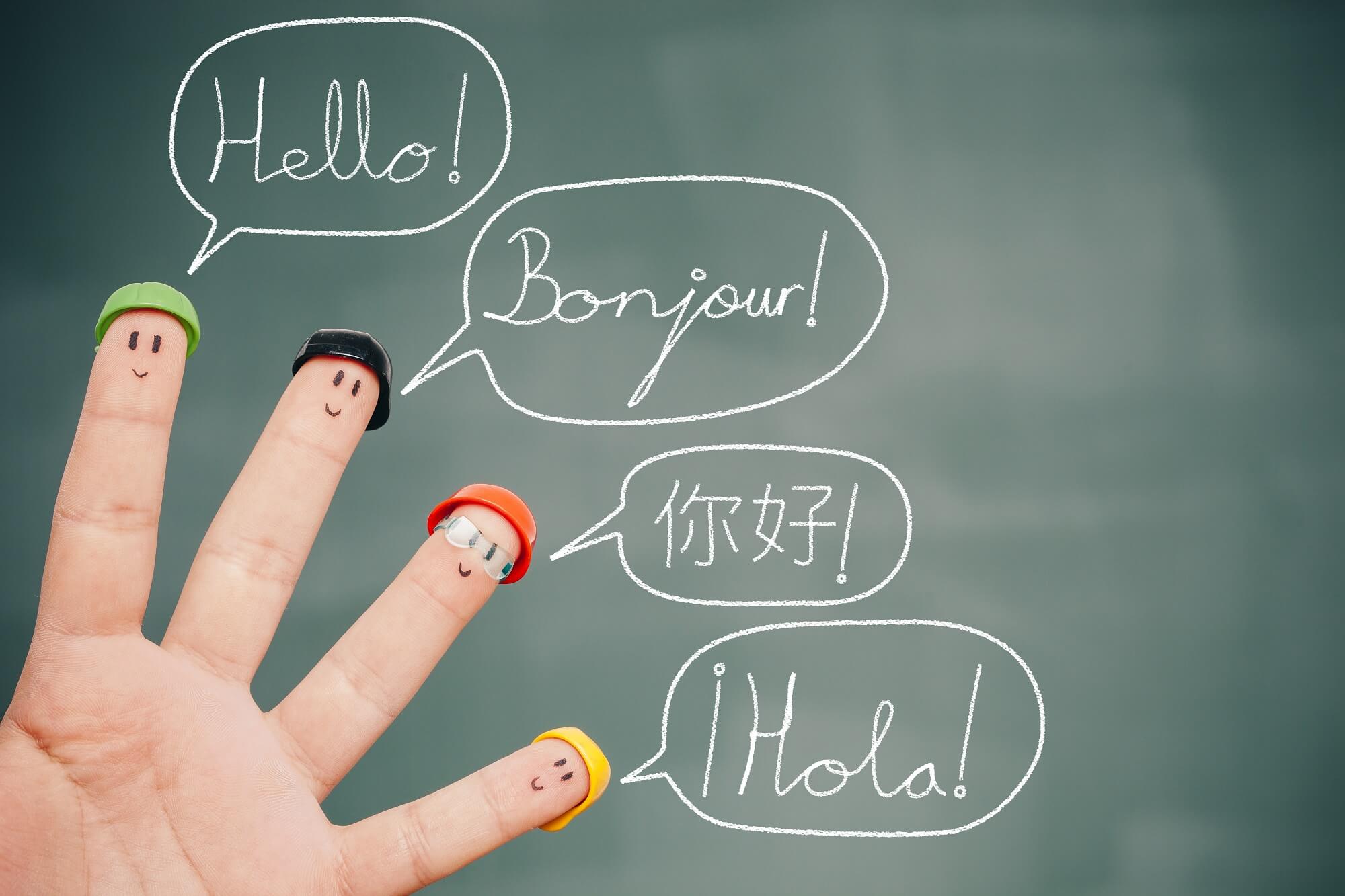6 Tricks for Your Child to Be Bilingual Before They're 6

In this article you’ll find tips to help your children be bilingual at a young age. During their first years of their life, children have a high level of cerebral plasticity and absorb all the information around them at an incredible rate. This helps them learn languages almost as if by magic.
Many parents know about their children’s ability to learn easily in their first years of life, and because of this they take advantage of it by signing their children up for classes at language academies, or by speaking to their children in two languages at home if they are able to do so.
For example, one parent can speak in their mother tongue and the other can speak in a second language.
It seems that there is a trend towards being bilingual, and that languages are very important in today’s society and for the future.
Adults who have a command of more than one language will have more access to good jobs and be better able to develop their own projects than those who speak only one language. This is why many parents strive for their children to be able to speak more than one language.
But, for their children to take advantage of this cerebral plasticity and absorb all of the information they need to learn another language, parents should have some tricks up their sleeve.
Parents are responsible for their children’s education and therefore it is necessary to keep in mind everything that is needed in order to improve and enhance this language learning. But how can we do this?
Tricks To Help Your Child Be Bilingual Before Age 6

1. The sooner you start, the better.
If you want your child to be bilingual and fluent in several languages, don’t wait for years to go by before adding a new language to his or her usual vocabulary.
The sooner you are able to start, the better. At 3 months of age, babies can differentiate between languages; and between the ages of 3 and 9 years old is the perfect time for learning new languages.
If you want your child to learn new languages, it is better to take a natural approach, just as your child would experience while learning their mother tongue.
2. Listen to their target language with your child every day.
Whether you want your child to learn Spanish, French or any other language, you should listen to it every day starting from when they are very young.
This way, they will be able to become familiar with the way speech sounds in this language. There are many ways to make sure that they hear the language: you could use songs, cartoons, stories, games etc. Just find a way in which your child will have fun and focus their attention.
3. Consider formal academic training.
Not everyone has the opportunity to enroll their children in renowned bilingual schools, but you can also opt for a public school that offers bilingual education. If this option is not compatible with your lifestyle, then you can enroll your children in private tutoring, in an academy, or in a different type of language course.
4. Consider extracurricular activities.
Many extracurricular activities are currently offered in schools or playrooms which can be very fun for children. They can be activities like dance, theater, or board games… All that matters is that children associate their target language with fun activities, so they will learn the new language well while also feeling entertained.

5. Reach out to family or friends who know the language.
If you have family or friends who know the language you want your children to learn, invite them over to give your children a chance to be immersed in the language.
Try to hold conversations in this language with your family and friends, but above all, involve your children so that they also feel involved in the conversation and in their learning. They will discover that they can also communicate in other languages.
6. Participate in fun activities at home.
Of course, learning at home is also a good idea for helping your children to become familiar with the new language. In addition to having fun, you also be able to spend quality time as a family.
Prepare fun activities for working on the target language, such as: Making greeting cards, writing stories in that language, recording themselves telling a story and then listening to it, etc. There are many fun ideas you can try.
All cited sources were thoroughly reviewed by our team to ensure their quality, reliability, currency, and validity. The bibliography of this article was considered reliable and of academic or scientific accuracy.
- Fishman, J. A. (1976). Bilingual Education: An International Sociological Perspective. https://eric.ed.gov/?id=ED144354
- May, S., Hill, R., & Tiakiwai, S. (2004). Bilingual/immersion education: Indicators of good practice. Final Report to the Ministry of Education, New. http://www.kns.ac.nz/files/6d9cf62d1d8e8824/file_set_file/0000/0532/May,%20Hill,%20Tiakiwai%20(2004)%20Education%20Counts.pdf
- Krashen, S. D. (2001). Bilingual education: Arguments for and (bogus) arguments against. GEORGETOWN UNIVERSITY ROUND TABLE ON LANGUAGES AND LINGUISTICS 1999, 111.
- Krashen, S. (1998). Bilingual Education: Good for English. NCJW Journal, 21(3), 18. https://search.proquest.com/openview/f8a733228b15daea9b1ab0d32cb6b4a7/1?pq-origsite=gscholar&cbl=27059
- Verma, M. K., Corrigan, K. P., & Firth, S. (Eds.). (1995). Working with bilingual children: good practice in the primary classroom(Vol. 6). Multilingual matters.
This text is provided for informational purposes only and does not replace consultation with a professional. If in doubt, consult your specialist.








